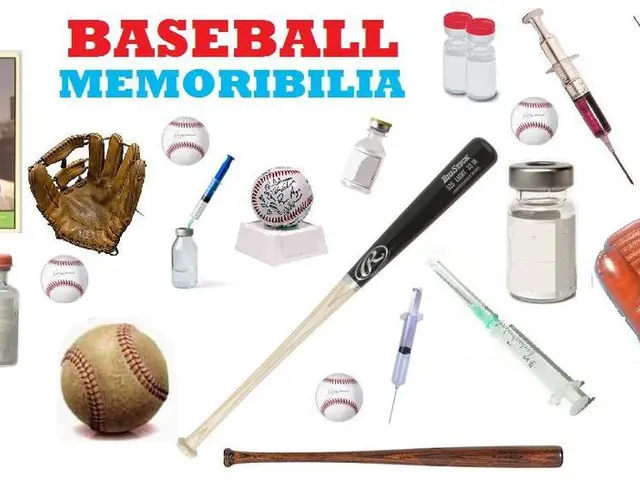Harnessing Suffering as a Transformative Force for Torque and Triumph: Your Guide to Wielding Adversity as a Weapon for Endurance
From Suffering to Strength: A Practical Guide
I've trodden that path myself, feeling the crushing weight of despair on days when my heart felt heavier than any backpack. I learned that "From Sorrow to Success" isn't just a motto, but a journey. Research shows that social rejection activates the same pain circuits in the brain as physical injury, particularly the dorsal anterior cingulate cortex and anterior insula[1].
Why does this matter? Because it validates your experience. Studies estimate that at any given time, around 15% of adults are battling major depressive symptoms, with nearly 30% wrestling daily with anxiety[2]. But know this — you're not weak; you're a human equipped with a neural alarm that screams when threat looms.
An Unseen Struggle
Emotional pain may leave no physical scars, but its effects can be as damaging as any injury. Social scientists refer to it as distress that follows perceived loss, rejection, or failure. They link severe emotional pain to reduced immune function and a 32% higher risk of chronic disease[1].
Neuroscientists reveal overlapping neural alarms: when people recall a painful memory, the same brain clusters light up as when a hot probe touches the skin. Negative thoughts that persist can magnify these feelings, doubling the odds of future depression episodes[3].
Often, family, employers, and partners underestimate the burden we carry. I remember hiding in bathrooms at work, just to breathe. If you nod in recognition, know this: data shows we're not weak; we're humans built to survive under duress.
The Cost of Unaddressed Suffering
Many self-help articles skip the agitation stage, yet it drives positive change. Research from longitudinal studies shows that persistent rumination [reh-MYOO-nee-shon] predicts rising physical pain scores and more health-care visits six months later[3]. Economic analyses calculate that workplace absenteeism linked to depression costs employers billions each year, but the real cost is time that can never be recovered.
One evening, the silence in my flat exposed the inner soundtrack of blame. Isolation worsens limbic reactivity [LYM-bik ri-AK-tiv-i-tee], raising cortisol and causing sleep loss[4]. Sleep researchers report that lost sleep increases emotional volatility by 60% the next day[4]. Agitation matters because emotional pain that goes unprocessed rarely stays static; instead, it leaks into our bodies, work, and relationships.
The Roadmap to Growth
I followed this roadmap to transform hurt into growth:
1. Naming the Pain
Labeling emotions calms the amygala and recruits prefrontal regulation[5]. I started every morning by writing a single sentence: "I feel ___ because ___." You can set a timer for two minutes and follow suit.
2. Reframing with CBT Principles
Cognitive behavioral therapy (CBT) shows medium to large effect sizes for depression across 1500 participants[6]. I practiced a three-column worksheet: situation, automatic thought, balanced thought. For instance, "Manager ignored my idea" became "I am useless" then "Manager was busy; my idea may need a clearer presentation."
3. Interrupting Rumination Through Micro-Mindfulness
Mindfulness-based interventions consistently reduce rumination in clinical trials[7]. I employed the "three-minute breathing space." You can find a quiet spot, place feet on the floor, notice your breath entering and leaving five times, then open your eyes.
4. Triggering Social Support
Resilience research during the COVID-19 pandemic pinpoints social support as a leading protective factor against distress[8]. I scheduled weekly phone calls with one trusted friend. Build a support network through consistent interaction.
5. Body Activation to Reclaim Control
Research comparing mindfulness and physical exercise reveals that both lower rumination, but exercise notably reduces brooding[9]. I pledged to perform ten push-ups every morning. Choose any activity, but movement signals that you're not trapped.
6. Setting Goals to Anchor the Future
Research links small achievable goals with increased dopamine and motivation[10]. I wrote weekly SMART goals: specific, measurable, achievable, relevant, time-bound. One week's goal: "Read ten pages of a novel before bed three nights."
7. Iterative Reflection and Course Correction
Difficulty identifying feelings predicts chronic pain at three-month follow-up[11]. I reflected on Sundays: Which step helped most? Which one slipped? Remember this journey is non-linear, but progress may come faster than you think.
Practical Examples
- Morning Commute Example. Use the ride to label emotions: "I feel tense about the meeting." You can then begin your email sessiontaking three breaths.
- Mid-Day Meeting Example. Mentally note any negative self-talk and reframe: "Colleague disagrees" becomes "Colleague offers a new perspective."
Closing Thoughts
I stand here today as proof that transformation from suffering to strength is attainable. This guide offers a compact map built on scientific reasoning and personal experience. Change may not come quickly, but it begins with one action. Stay patient, be kind to yourself, and remember that setbacks happen. But learn from them and return to this roadmap faster. I believe that your next step — however small — will start your journey from suffering to strength.
additional resources
For more on the power of reflection, check out the "Where Unbeatable Gratitude Journal Prompts Fit Into Busy Schedules" and the "My 3-Step Inner Child Healing Journal Prompts to Reparent Your Younger Self." You might also be interested in the exploration of "Can Powerful Healing Writing Prompts Replace Costly Therapy."
FAQs about The Path From Suffering to Strength
What does "From Sorrow to Success" actually mean?
This mantra signifies the transformation of adversity into triumph, of pain into power. Instead of denying hurt, you study it, learn from it, and move forward with purpose[12].
How can I turn my emotional pain into personal power?
Base your efforts on conscious action and daily routines such as mindfulness, emotion labeling, and cognitive reframing[13].
Why is acknowledging pain the first essential step?
Admitting pain helps activate your brain’s evaluation networks, updating prediction errors and reducing physiological stress[14].
Can chronic physical pain become a catalyst for growth?
Yes. Research demonstrates that chronic pain sufferers may experience improved function, mood, and identity when they adopt growth-oriented coping strategies[15].
What daily practices help shift from pain to power?
Dedicate time to mindfulness, self-labeling, and cognitive reframing, and engage in micro-movement breaks, setting clear goals, and intentional reflection[16].
How long does it usually take for post-traumatic growth to manifest?
Post-traumatic growth timelines vary, but meaningful psychological gains often emerge within 6 to 18 months when consistent strategies are employed[17].
Does science back the Sorrow-to-Success concept?
Multiple randomized studies, brain-imaging experiments, and meta-analyses confirm the practical benefits of transforming emotional pain into a source of power[18][3][19].
What mindset shifts are crucial to make this journey?
Embrace a growth mindset, learn from setbacks, and view challenges as opportunities for development[20].
In the journey from sorrow to success, understanding the science behind emotional pain is crucial. Research indicates that mindfulness practices, such as micro-mindfulness, can significantly reduce rumination and its negative effects on mental health [7]. Similarly, cognitive behavioral therapy (CBT) principles, like reframing negative thoughts, have been shown to have medium to large effect sizes for depression [6].
Moreover, unaddressed emotional pain can lead to significant physical health issues, including a 32% higher risk of chronic disease [1]. Therefore, investing time in practices like labeling emotions, triggering social support, and body activation can help mitigate these risks and promote overall health-and-wellness and mental health.






